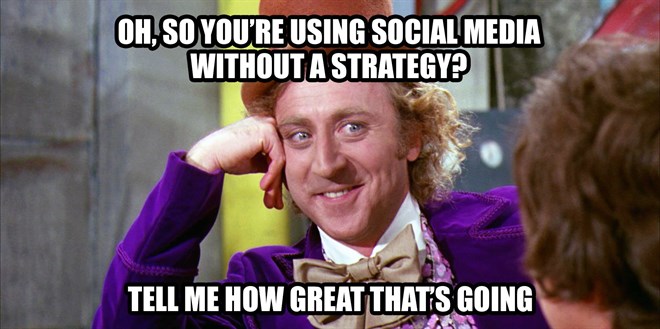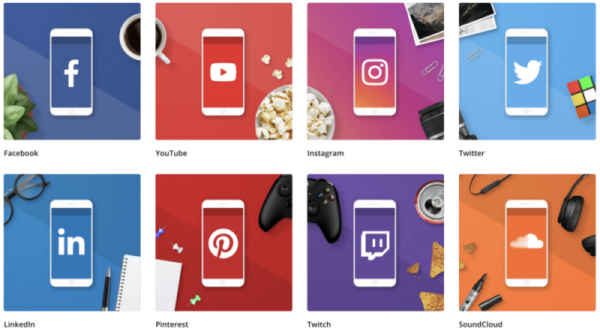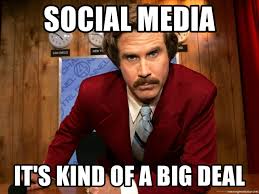10 Common Social Media Mistakes (And How To Avoid Them)
We don’t really need to point out the importance of the Internet. 94% of the Belgian population uses the Internet, and so does the rest of Western Europe.
You notice that when you enter any building: there is wifi everywhere, you see screens and laptops wherever you look, and everyone is walking around using a smartphone.
But what about social media? What is the importance of social media in Belgium? According to research done by Statista, Belgium counted 9,4 million Facebook users, which is around 2 million more than in 2018. That’s a lot, considering the fact that legally you can only only make an account from the age of 13. So it’s safe to say the vast majority of Europeans use Facebook.
According to research by GWI published in 2022, time sent every day on social media has reached a plateau, with many users claiming they spend less time on social media than they used to. The report also states that short form video is the most popular content type. This also explains the enormous growth TikTok has shown the last few years (at the end of 2021, it counted about 3 million Belgian users).
if it wasn’t clear already, social media plays an important role in marketing. Especially since most people in Europe easily spend more than one and a half hours a day on social media.
The importance of social media as a marketing tool can hardly be underestimated. Yet many companies make mistakes that are easy to avoid. We would like to list 10 common social media mistakes for you, and immediately tell you how you can avoid them.
Social media without a strategy
Still, a lot of organizations don’t consider social media when defining their strategy. Social media is often seen as a nice to have, something to think about when there is some extra time. For many companies, this isn’t part of their strategy.
If you take a look at the figures that are published in every social media report these days, you will quickly understand how much impact you can have on social media. Working out a social media strategy should be a no brainer.

Like every company, you too have a target audience, you too have goals to achieve. A social media strategy is a lot more than just deciding how many posts you want to do per week and then just randomly posting something.
The solution is obvious: make sure you have a strategy for your social media efforts. Define your target audience, find out where they are active and build your strategy around those channels.
You also need to think about the types of content you should be using. This includes the visuals and tone of voice that appeals to your audience. Furthermore, you need clear measurable goals. This allows you to measure your progress and to make informed decisions when you need to adjust your strategy.
Not every social media channel is the same
If we got 50 cents every time someone told us that they just post the exact same thing on different platforms, we could almost retire. A lot of organizations still treat their Facebook page and Twitter account the same way. But unfortunately, it doesn’t work that way at all.
Every social media channel gives you other possibilities, different audiences, other formats, different algorithms etc. In your target audience, there are probably a lot of people that use different social media channels. But they use each one for different reasons and at different times and intervals.


If you are going to post on different social media channels, make sure your content is modified for that specific channel. If you want to appeal to a different audience, you need to deliver different content, use a different tone of voice and modified images. Pay attention to hashtags: they don’t work the same way everywhere and you have to align them to your target audience.
Image sizes will vary so you need to provided different sizes. And make sure you re-upload your videos from Youtube to Facebook or LinkedIn, they prefer native videos.
Ignore or delete negative comments
No one likes to get negative feedback. And what makes it extra annoying on social media is that everyone can see those comments. But deleting or ignoring them is a bad idea.
Sometimes clients will just have a bad experience. Thanks to social media it’s easier than ever to express your opinion. The problem is: if you start deleting those comments, you give the impression that their opinion doesn’t matter. And it most certainly will not stop people from posting negative comments. You only make it worse by deleting or ignoring them.
Instead, you can do respond to them, acknowledging them and their opinion. It shows you care, and a lot of the negativity is already countered. You can also use their feedback to improve on your products or services, and communicate that later on.
It also shows that you are human. When you respond, think carefully about what you are going to say. That way you can still turn a negative comment into something positive for your organization, and hopefully save your relationship with your customer.
Not engaging in dialogue
Another common mistake is not engaging in dialogue on social media. Whether you get negative or positive comments, it’s never a good idea to ignore people. Like we said before: ignoring people gives them the impression that you don’t care.
If people take the time to place a comment on your post, it means that they DO care. Make sure that you or your social media team answers those comments reasonably quickly. When you reply, It also increases the chances that people will continue to engage in the conversation with your brand in the future.
So make sure to engage in dialogue on every channel you use. Decide in advance how you want to deal with comments. If you are a larger organization, it is also good to have a social media policy. Again, strategy is important here. Interactions on social media are often about the experience people have with your organization: sales, service, billing etc. Make sure your organization is ready to deal with all of that.
Not being personal
People don’t want to communicate with a logo or an impersonal email address. People want to communicate with people. Often you see brands and organizations don’t seem human at all online. Their tone of voice doesn’t match their target audience, and often lacks a human touch.
It’s a lot easier to sound professional than to sound human. People use jargon way too much. It’s a trap so many people fall into. We also see a lot of people using the same standard phrases from presentations and brochures. It makes you sound like a machine rather than a human trying to make a real connection.
The good news: fixing this is easier than you may think. Social media is about connecting with people and having a conversation. So make sure you sound like you’re having an actual conversation. Hire a good copywriter for your social media channels. And before you post, make sure it sounds like what your customers expect. Read your text out loud and listen carefully. This way you can often remove words that are unnecessary or too formal.
Too much commercial talk
Many brands and organizations see their social media channel too much as promotional channels. They rarely post something insightful or inspirational, and yet this is so important to come across as human and credible on social media. If you spend too much time promoting your products or services, many people will just lose interest.
Don’t get us wrong: of course, you’re allowed to sell your products or services on social media. But make sure you balance out promotional content with non-commercial stuff. This will increase your credibility and build trust with your target audience. A best practice to keep that balance is to post a maximum of 1 commercial post for every 4 non-commercial posts.
Do you find it difficult to find non-commercial content? Here’s a tip: find out the stories behind your employees, or events in your organization. Do you organize a team building or an annual barbecue? You can publish great content around that as well. With a little creativity, you can get your content calendar filled up with relevant content.
Not posting regularly
So from now on, you have a strategy. In that strategy, it says how often you’re going to post something on each channel.
But things don’t always go as planned. Colleagues get sick, an important meeting comes up, etc. Then it happens that you don’t post important or relevant updates. And if you post less regularly, your content will be less visible to your target audience, that’s a waste of effort.
This problem is easy to solve with a content calendar. This allows you to schedule a lot of content in advance.
Several tools allow you to program posts in advance. That means you can put time into it when it’s convenient for you and you can provide a lot of content in advance. This allows you to have more room for last-minute efforts. It also increases the chance that you will post nothing for too long.
Not measuring your results
Again, it’s important to have a strategy, where you set your KPIs. With social media, you can create a significant impact in terms of marketing.
Your first campaigns might not be the most successful ones. You are still looking for the right timings and you don’t know what works best. But without data, it’s very hard to know where you have to adjust.
Measuring is knowing. It’s a cliche, but it’s true. By measuring your results, you allow yourself to make adjustments if your campaign is not working as expected. You get data about your target audience, about which campaigns work and which don’t, and what content is more popular. With that knowledge, you can bring your social media efforts to the next level.
Some platforms have more analytics capabilities than others. Take a moment to look at all the data you can find on Facebook, LinkedIn, Youtube etc. Also in Google Analytics, you will find a lot of interesting data about your campaigns and your audience. Are analytics not really your thing? Take time to watch some videos to understand the basics, it doesn’t take too long and you get a lot of insights.
Too many social media channels
Another mistake we see often: using as many social media channels as possible. It starts with a Facebook page, then they add a LinkedIn page and maybe a Twitter account too. And why not Instagram, while we’re at it. And let’s add Youtube too. Are we forgetting any channels? Maybe TikTok, Snapchat…?
Creating many accounts is not hard at all. Providing them all with relevant targeted content, specific for each platform, is the hard part, especially if you lack the resources. It is very tempting to add more channels. But then if goes sideways: it feels like too much work, you stop posting regularly, and eventually you just quit, on one or more channels.
This is very easy to solve: don’t add any channels until you have really built up something on one channel for a longer period. Make sure you post relevant content regularly, and that you have a good grasp on the new channel.
Then see if you have the resources to add another channel. But think it through: is there really an important part of your target audience there? Do you really have the resources, and is it actually worth it? If not, just don’t start.
Inferior content
So many marketers just post random content. Sometimes it’s not relevant, it contains mistakes or the images suck. We understand that sometimes there is very little time to do things the right way. Sometimes something comes up that is more important. But it still is a bad idea to treat your socials that way.
Our idea on this is: if you’re going to do it, do it right. Your target audience will notice when you post something that’s just not right, for whatever reason. They spend more than enough time online to know what is relevant or just a waste of their precious time.
Use a content calendar to schedule content in advance. This gives you time to spend thinking about your wording. Also, have someone else proofread your content. The person writing content often overlooks spelling mistakes or sentences that don’t make any sense. Don’t forget to check if your post fits in your company’s strategy. This way you avoid posting inferior content.


There you have it: 10 mistakes we see a lot of people make on social media. Now you also know how to avoid these and bring your social media marketing to the next level. Don’t forget: quality is key. If you have any questions at all about social media, we’re happy to help.
Build your content strategy in 10 easy steps
Download our free whitepaper and get started on your perfect content marketing strategy, using the tips and tools we share.






